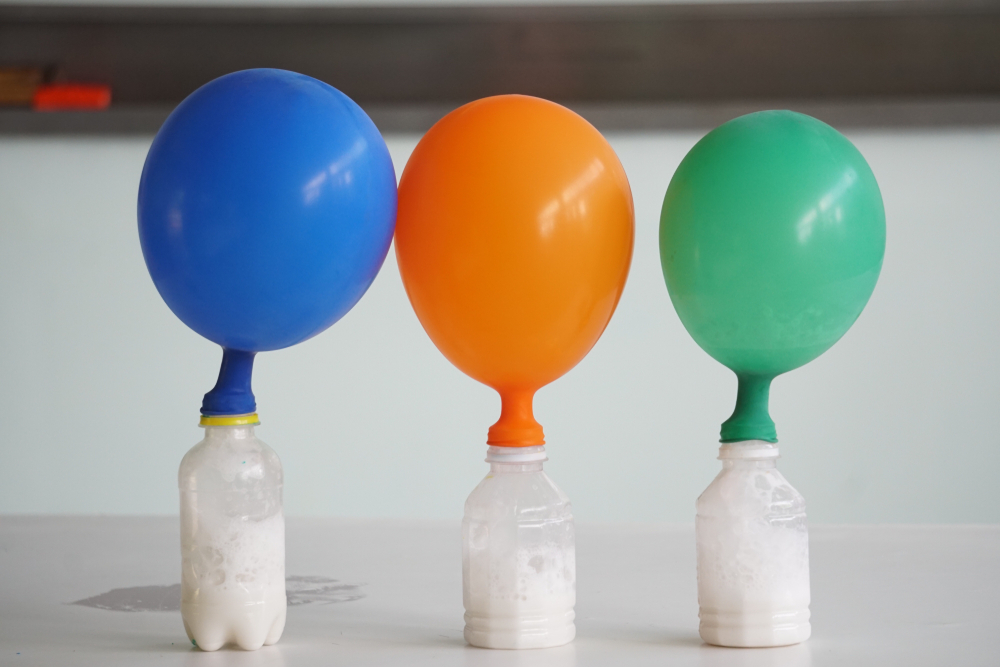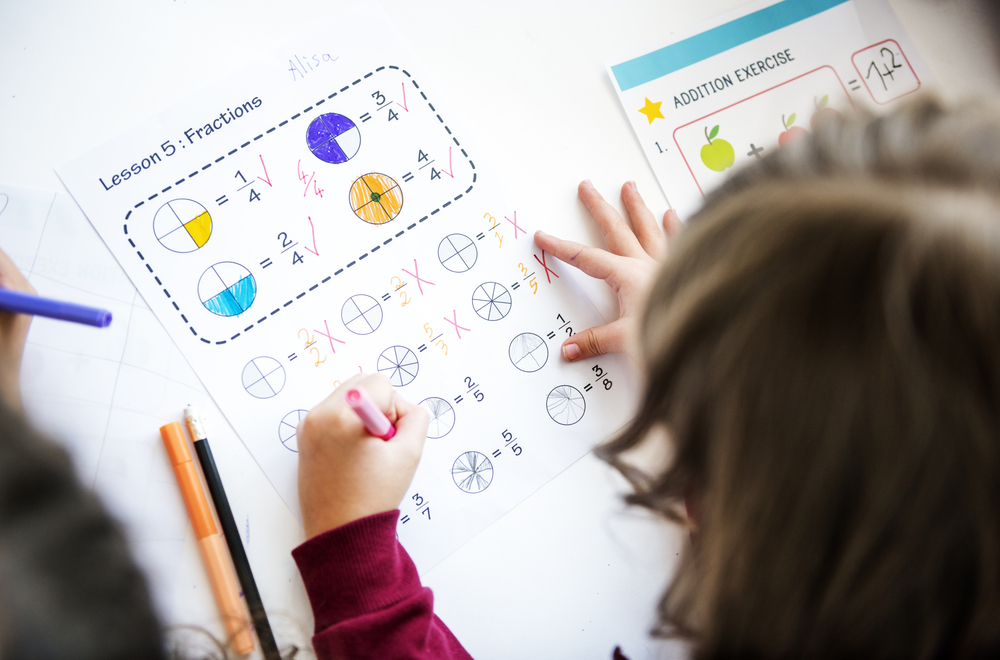Baking Soda Experiments
Nov. 1, 2021
When it comes to getting your little scientist acquainted with science experiments, the answer is not hard to plumb. You can find it just heading to the kitchen and taking a glance at the kitchen bench. The reaction between baking soda and vinegar is a great way to get young learners excited about science and the scientific method. Not only are these ingredients readily available in the household but they are safe for handling with little scientists.
The chemical reaction when sodium bicarbonate (baking soda) and vinegar interact creates water, sodium acetate (a salt used in food products), and carbon dioxide gas. The release of carbon dioxide gas is what makes baking soda experiments so much fun. As the solid baking soda and liquid vinegar create a gas the gas expands which causes volcanoes to erupt, balloons to inflate and corks to pop their tops!
While all the ingredients in these experiments are readily used in food products it is important to practice proper safety. At no point should any of these products come in contact with your face as they could cause irritation. These products can also be disposed of safely down the drain followed by plenty of water.
Experiment 1: Does It React?
Materials: ice cube tray, baking soda, vinegar, other liquids to test: water, apple juice, soda, lemon juice etc.
This experiment will get us started in understanding how different chemicals can interact with one another. Use an ice cube tray or any dish with several storage cells in it. Place a small amount of baking soda in each cell. Then choose as many other liquids as you would like and slowly pour or pipette small amounts of liquid into each cell one by one. Note any changes you may see in the cell.
Let the students make their observations and hypothesize about what is happening. A great way to get them on track is to have two types of vinegar. Once they notice that the vinegars are reacting the most they should make the connection that vinegar and baking soda can be very reactive. Lemon and lime juice are also very acidic and will cause interesting reactions.

Experiment 2: Fire Extinguisher
Materials: Cup with lid, straw, modeling clay, baking soda, vinegar
This experiment is best done outdoors. Now that we have seen the power of expanding gases we can put those gases to work for us. This experiment will use that expansion to move liquid water for us. You will need a cup with a lid and a straw that fits inside. First we want to secure the straw to the lid and plug any holes with some modeling clay. Then pour the water and vinegar in the container.
Quickly dump the baking soda in and shut the lid. As the baking soda and vinegar interact the expanding carbon dioxide fills the container. It pushes in every direction including down. As it pushes the water down it will rush up the straw and spray out. You will need to secure the lid to make sure no gas escapes from the cracks.
Experiment 3: Invisible Gas
Materials: Cup, Funnel, Candle, baking soda, vinegar
This experiment is going to provide a much more in-depth look at the chemical reaction from baking soda and vinegar. First, pour your vinegar into the cup. Then light your candle and have it ready. Dump the baking soda into the cup and rest the funnel on top. As the reaction occurs, bring the candle flame to the top of the funnel. You will start to notice the flame flickering and then it will go out. The expanding gas is carbon dioxide. Fire needs oxygen to burn, once you smother it with carbon dioxide it will no longer be able to burn.

Experiment 4: Cork Pop
Materials: Bottle with cork, or other pop top container, baking soda, vinegar
Once students discover the expansive properties of the baking soda and vinegar reaction it is time to test out its power. This experiment is best performed with a glass bottle and cork, however, any secured lid can be popped off. Pour the baking soda into the bottom of your container using a funnel. Quickly dump the vinegar into the container and put the cork in or seal the lid.
Keep the top aimed away from anybody during this process. Set the container down and step back. As the baking soda and vinegar interacts carbon dioxide gas is produced in the chemical reaction. This gas takes up more space than the original ingredients and begins to expand in the chamber. The pressure increases until the cork can no longer hold it back and then POP!
Now you've got 4 amazing ideas on how to keep your child busy with baking soda experiments based on the scientific method! So, here you go! Your young explorer will definitely like discovering the secrets of science hidden behind the simple kitchen utilities. To enrich the child's background and fix new knowledge, checс out Kids Academy science worksheets and activities to supplement your child’s learning in between all your child’s experiments! You can also find more fun experiments for your child in the Talented & Gifted learning app.











